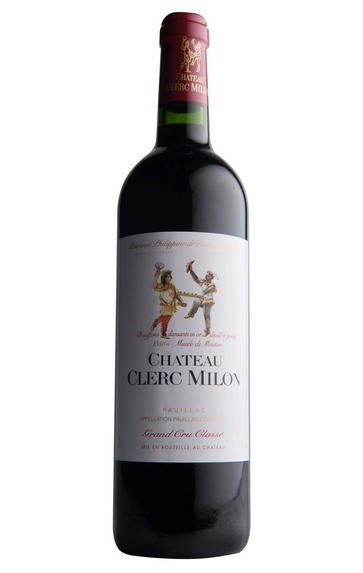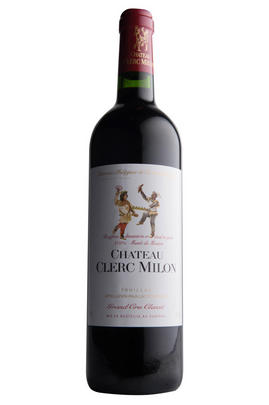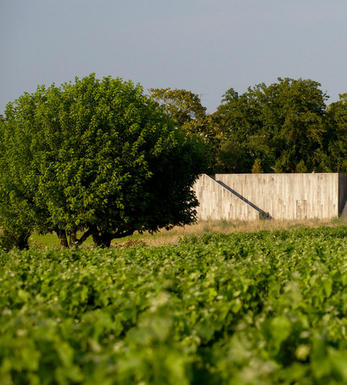
2009 Château Clerc Milon, Pauillac, Bordeaux

Critics reviews
Composed of 50% Cabernet Sauvignon, 44% Merlot and the rest Cabernet Franc, Petit Verdot and a touch of Carmenere, it reveals plenty of structure and tannin, but the evolved aromatics offer a deceptive view that the wine will be drinkable early on. I do not think this is the case as the tannins kick in once it hits the palate. This seriously endowed, powerful, boisterous, muscular Pauillac should hit its prime between 2017 and 2035.
Robert Parker - Wine Advocate - Feb 2012
Jancis Robinson MW - jancisrobinson.com - April 2010
James Suckling - Wine Spectator - March 2010
Composed of 50% Cabernet Sauvignon, 44% Merlot and the rest Cabernet Franc, Petit Verdot and a touch of Carmenere, it reveals plenty of structure and tannin, but the evolved aromatics offer a deceptive view that the wine will be drinkable early on. I do not think this is the case as the tannins kick in once it hits the palate. This seriously endowed, powerful, boisterous, muscular Pauillac should hit its prime between 2017 and 2035.
Robert Parker - Wine Advocate - Feb 2012
About this WINE

Château Clerc Milon
Classified as a Fifth Growth in 1855, Château Clerc Milon is one of a trinity of Pauillac classified growths owned by the Baron Philippe de Rothschild family. Baron Philippe began renovation and restoration here in 1970 – work that was later championed by his daughter Baroness Philippine until her death in 2014.
Baroness Philippine’s children, Camille and Philippe Sereys de Rothschild and Julien de Beaumarchais de Rothschild, now continue their mother’s legacy. In recent times, the estate has flourished under the careful stewardship of Director Jean-Emmanuel Danjoy. In 2020, his role expanded to include Château Mouton Rothschild and Château d’Armailhac and the talented winemaker Caroline Artaud joined the team at Château Clerc Milon in the capacity of Director.
Château Clerc Milon’s vineyard holdings – 41 hectares – neighbour two first growths. More than half of the vines are Cabernet Sauvignon (51.5%), with the remainder being Merlot (37%), Cabernet Franc (8%), Petit Verdot (2%) and Carmenère (1.5%). The vines have an average age of 48 years. Harvesting here is done by hand.

Pauillac
Pauillac is the aristocrat of the Médoc boasting boasting 75 percent of the region’s First Growths and with Grand Cru Classés representing 84 percent of Pauillac's production.
For a small town, surrounded by so many familiar and regal names, Pauillac imparts a slightly seedy impression. There are no grand hotels or restaurants – with the honourable exception of the establishments owned by Jean-Michel Cazes – rather a small port and yacht harbour, and a dominant petrochemical plant.
Yet outside the town, , there is arguably the greatest concentration of fabulous vineyards throughout all Bordeaux, including three of the five First Growths. Bordering St Estèphe to the north and St Julien to the south, Pauillac has fine, deep gravel soils with important iron and marl deposits, and a subtle, softly-rolling landscape, cut by a series of small streams running into the Gironde. The vineyards are located on two gravel-rich plateaux, one to the northwest of the town of Pauillac and the other to the south, with the vines reaching a greater depth than anywhere else in the Médoc.
Pauillac's first growths each have their own unique characteristics; Lafite Rothschild, tucked in the northern part of Pauillac on the St Estèphe border, produces Pauillac's most aromatically complex and subtly-flavoured wine. Mouton Rothschild's vineyards lie on a well-drained gravel ridge and - with its high percentage of Cabernet Sauvignon - can produce (in its best years) Pauillac's most decadently rich, fleshy and exotic wine.
Latour, arguably Bordeaux's most consistent First Growth, is located in southern Pauillac next to St Julien. Its soil is gravel-rich with superb drainage, and Latour's vines penetrate as far as five metres into the soil. It produces perhaps the most long-lived wines of the Médoc.
Recommended Châteaux
Ch. Lafite-Rothschild, Ch. Latour, Ch. Mouton-Rothschild, Ch. Pichon-Longueville Baron, Ch. Pichon Longueville Comtesse de Lalande, Ch. Lynch-Bages, Ch. Grand-Puy-Lacoste, Ch, Pontet-Canet, Les Forts de Latour, Ch. Haut-Batailley, Ch. Batailley, Ch. Haut-Bages Libéral.

Cabernet Sauvignon Blend
Cabernet Sauvignon lends itself particularly well in blends with Merlot. This is actually the archetypal Bordeaux blend, though in different proportions in the sub-regions and sometimes topped up with Cabernet Franc, Malbec, and Petit Verdot.
In the Médoc and Graves the percentage of Cabernet Sauvignon in the blend can range from 95% (Mouton-Rothschild) to as low as 40%. It is particularly suited to the dry, warm, free- draining, gravel-rich soils and is responsible for the redolent cassis characteristics as well as the depth of colour, tannic structure and pronounced acidity of Médoc wines. However 100% Cabernet Sauvignon wines can be slightly hollow-tasting in the middle palate and Merlot with its generous, fleshy fruit flavours acts as a perfect foil by filling in this cavity.
In St-Emilion and Pomerol, the blends are Merlot dominated as Cabernet Sauvignon can struggle to ripen there - when it is included, it adds structure and body to the wine. Sassicaia is the most famous Bordeaux blend in Italy and has spawned many imitations, whereby the blend is now firmly established in the New World and particularly in California and Australia.


Buying options
Add to wishlist
Description
Super sweet, blackberry aromas waft from the 2009 Ch. Clerc Milon. This has great intensity and power in the mouth with a lovely ball of sweet, ripe fruit on the palate and very, very, fine, ripe tannins. Somehow though, this still manages to retain its elegance, which is carried through on a long, fine finish.
wine at a glance
Delivery and quality guarantee